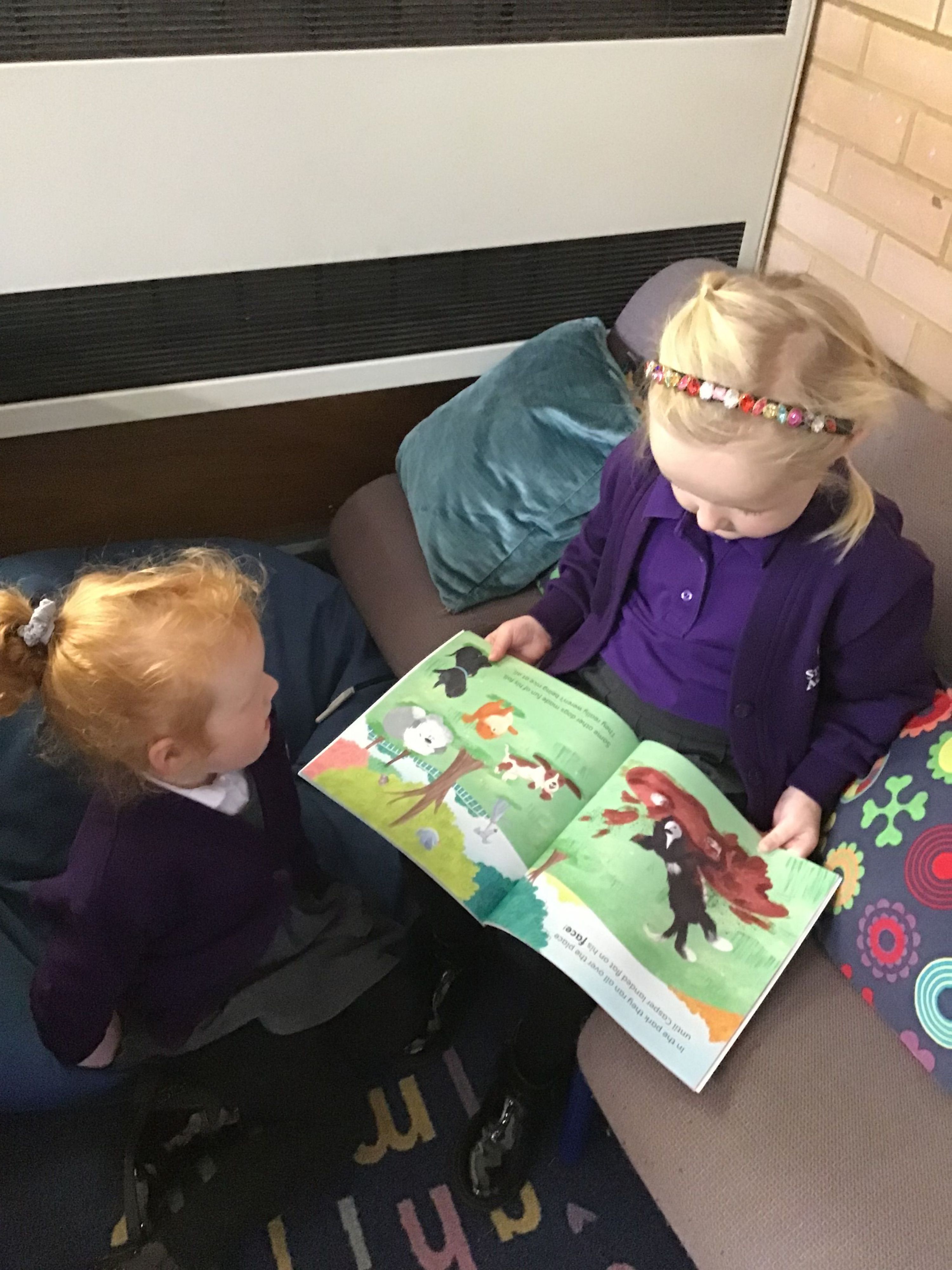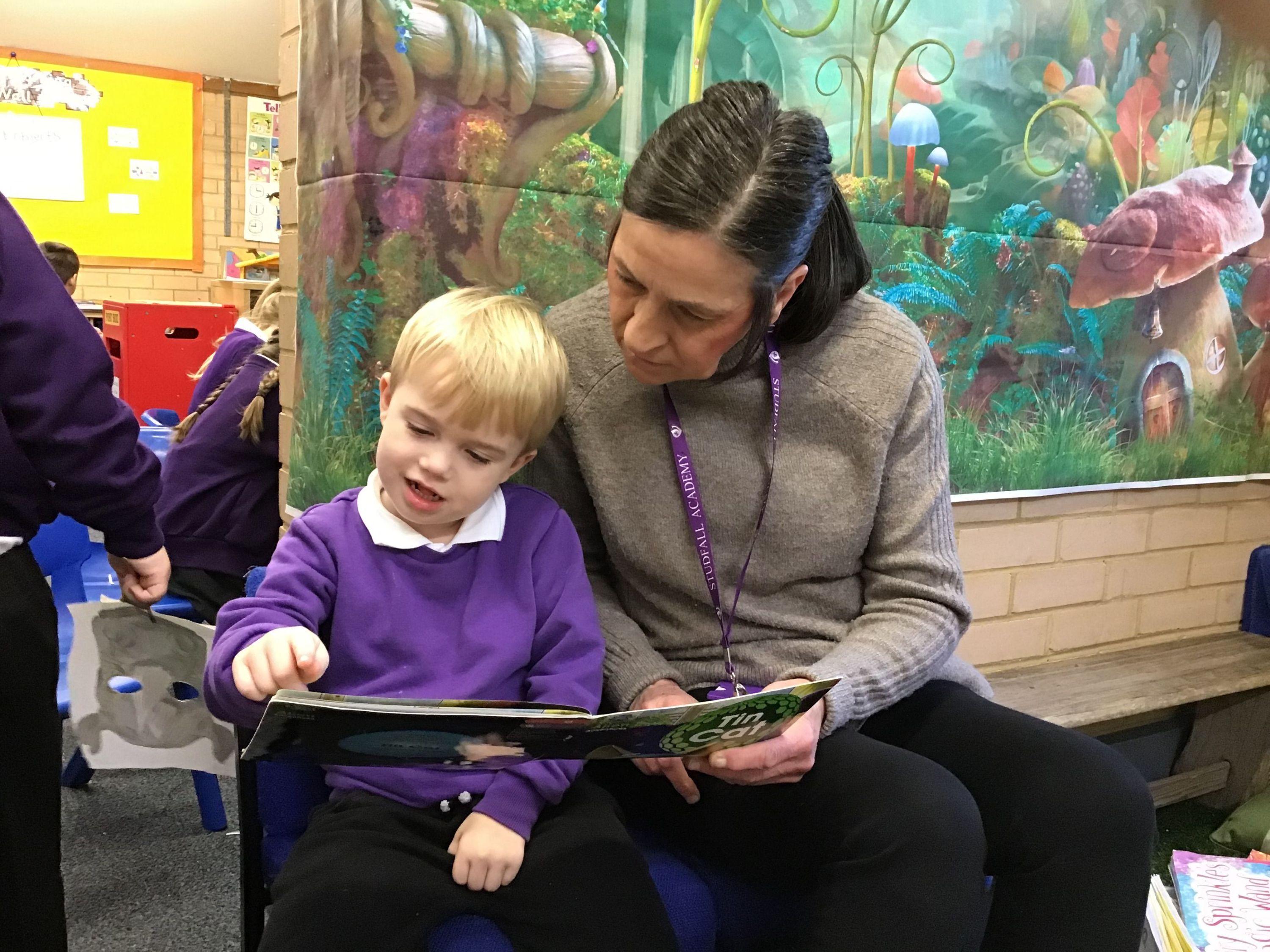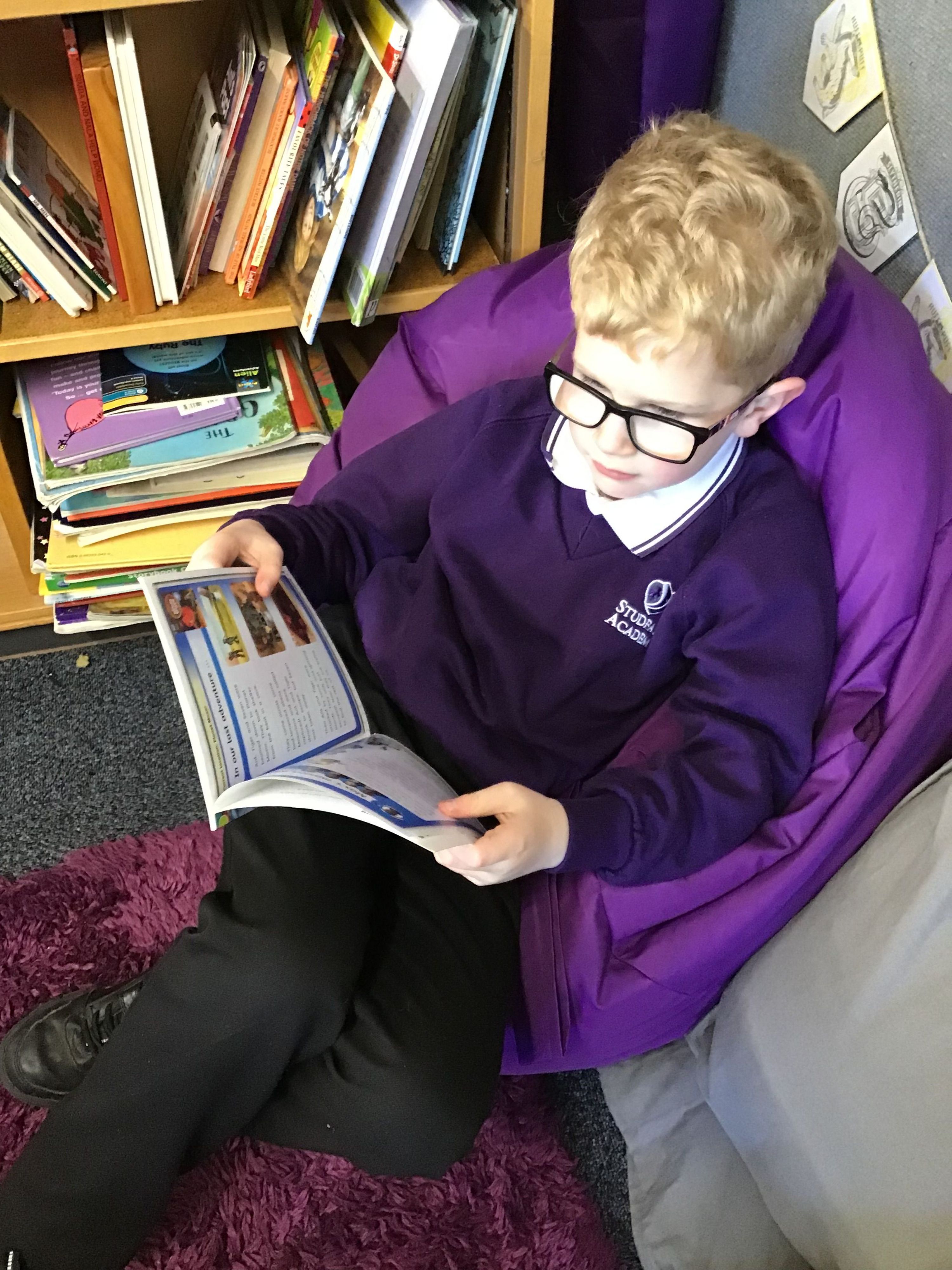English - Reading and Writing
Our Curriculum Intent - Reading
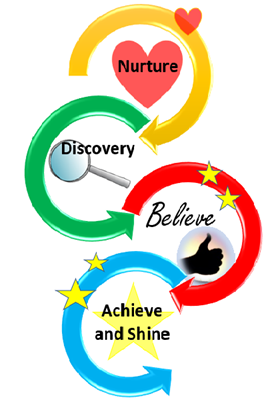
At Studfall Infant Academy, we believe that our children deserve the very best opportunities to develop the skills necessary to read, write and speak fluently. We offer an exciting and multi-sensory curriculum where we encourage our children to express their thoughts and ideas.
Reading at Studfall Infant Academy
At Studfall Infant Academy reading is highly valued. When children learn to read at an early age, they have greater general knowledge, a wider range of vocabulary, they are more fluent readers, and they have improved attention spans and better concentration.
Learning and activities are planned and based around carefully chosen books and stories. All children access a language and story rich environment, from Nursery to Year 2 with all classes having a cosy and inviting reading area with a variety of books that link in with their interests and the topic that is being taught.
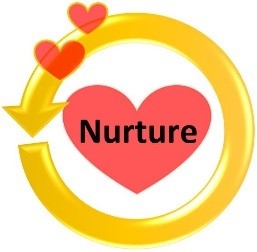
We foster our children’s interests by providing access to books, story sacks and small world toys to act out a story as part of their first experiences of literacy. As they progress, links to role-play are also made, which helps to develop skills such as empathy, problem-solving, and morality.

We believe that reading opens the door to early academic success and imparts a love of learning. It ignites creativity, sparks curiosity, and stimulates the imagination in our young children.

Reading is at the very heart of our curriculum; it is proven to improve cognitive skills and help along the process of cognitive development. Reading aloud to our children provides them with background knowledge on their young world and helps them make sense of what they see, hear, and read.

The sooner our children learn to read, the more opportunities they will have to encounter the written word. More exposure leads to better spelling, grammar, writing, and oral communication and so enabling our children to achieve their full potential.



Reading at home
You can really help your child’s progress if you practise their reading with them at home and ensure that they bring their book bag to school every day.
Your child will have a home/school reading record book, please write a short comment when you have listened to your child read at home. Examples of comments to write can be found at the bottom of this page.
We use EPIC reading - which is an online library - in our taught sessions, where the interactivity of the books is valuable. This scheme also links up with National Geographic - meaning we have a wealth of access to non-fiction books too.
We have a reading incentive called 'Remarkable Reads' where each year group has a list of books to read at home. Children are awarded prizes for reading 10, 15 or 20 books (5, 10, 15 in nursery) and are recognised on the Reading wall of fame. A copy of the leaflet is attached below.
Thank you
Miss Kerry Swan
Reading Lead
Phonics and Spellings

Essential Letters and Sounds
Essential Letters and Sounds (ELS) is our chosen Phonics programme. The aim of ELS is ‘Getting all children to read well, quickly’. It teaches children to read by identifying the phonemes (the smallest unit of sound) and graphemes (the written version of the sound) within words and using these to read words.
Children begin learning Phonics at the very beginning of Reception and it is explicitly taught every day during a dedicated slot on the timetable. Children are given the knowledge and the skills to then apply this independently. Children in pour Nursery also follow the ELS programme with the development of learning some initial sounds and rhymes.
Throughout the day, children will use their growing Phonics knowledge to support them in other areas of the curriculum and will have many opportunities to practise their reading. This includes reading 1:1 with a member of staff, with a partner during paired reading and as a class.
Children continue daily Phonics lessons in Year 1 and further through the school to ensure all children become confident, fluent readers.
We follow the ELS progression and sequence. This allows our children to practise their existing phonic knowledge whilst building their understanding of the ‘code’ of our language GPCs (Grapheme Phoneme Correspondence). As a result, our children can tackle any unfamiliar words that they might discover.
Children experience the joy of books and language whilst rapidly acquiring the skills they need to become fluent independent readers and writers. ELS teaches relevant, useful and ambitious vocabulary to support each child’s journey to becoming fluent and independent readers.
We begin by teaching the single letter sounds before moving to diagraphs ‘sh’ (two letters spelling one sound), trigraphs ‘igh’ (three letters spelling one sound) and quadgraphs ‘eigh’ (four letters spelling one sound).
We teach children to:
• Decode (read) by identifying each sound within a word and blending them together to read fluently
• Encode (write) by segmenting each sound to write words accurately.
The structure of ELS lessons allows children to know what is coming next, what they need to do, and how to achieve success. This makes it easier for children to learn the GPCs we are teaching (the alphabetic code) and how to apply this when reading.
ELS is designed on the principle that children should ‘keep up’ rather than ‘catch up’. Since interventions are delivered within the lesson by the teacher, any child who is struggling with the new knowledge can be immediately targeted with appropriate support. Where further support is required, 1:1 interventions are used where needed. These interventions are short, specific and effective.
Supporting Reading at Home:
- Children will only read books that are entirely decodable, this means that they should be able to read these books as they already know the code contained within the book.
- We only use pure sounds when decoding words (no ‘uh’ after the sound)
- We want children to practise reading their book 4 times across the week working on these skills:
Decode – sounding out and blending to read the word.
Fluency – reading words with less obvious decoding.
Expression – using intonation and expression to bring the text to life!
We must use pure sounds when we are pronouncing the sounds and supporting children in reading words. If we mispronounce these sounds, we will make reading harder for our children. Please watch the videos below for how to accurately pronounce these sounds.
At the beginning of each academic year, we will hold an information session for parents and carers to find out more about what we do for Phonics, Reading and English at our schools. Please do join us.
More support for parents and carers can be found here:
https://home.oxfordowl.co.uk/reading/reading-schemes-oxford-levels/essential-letters-and-sounds/
Download the Year Two Spelling Schemes below
Handwriting
 As a school we use a handwriting scheme called Kinetic Letters. The programme develops successful writers by improving shoulder and pelvic girdle strength ensuring children are ready to write. It then teaches families of letters using a multi-sensory approach which provides children with the skills to write with stamina, flow and fluency. The programme has four threads:
As a school we use a handwriting scheme called Kinetic Letters. The programme develops successful writers by improving shoulder and pelvic girdle strength ensuring children are ready to write. It then teaches families of letters using a multi-sensory approach which provides children with the skills to write with stamina, flow and fluency. The programme has four threads:
• Making bodies stronger
• Holding the pencil (for speed, comfort and legibility)
• Learning the letters
• Flow and fluency
In Nursery the children are encouraged to build up their core strength, gross and fine motor skills through exciting activities such as messy play, climbing apparatus, cutting, pegging, playing musical instruments and mark-making.
In Reception the children initially learn to form the letters through large body movements and gradually move onto smaller movements, until they are ready to write on paper, whiteboards and with materials like sand, shaving foam and corn flour. Children will be taught how to hold their pencil correctly and how to develop the correct posture when writing.
At Key Stage One, children continue to learn to write their letters correctly, linked by the moves made to form each letter. We encourage children to use the correct starting position for each letter and produce letters of a uniform size. When the children can form their letters correctly and sit them neatly on the line, they will be ready to learn how to join their handwriting.
Download the Kinetic Letters Booklet below

